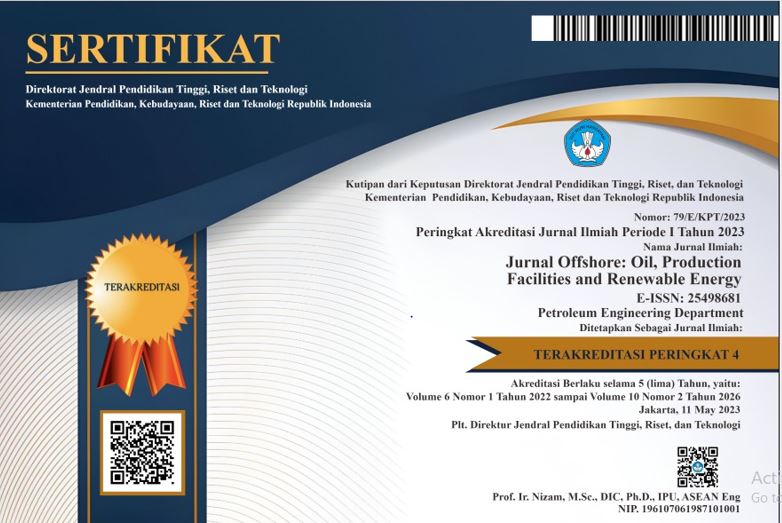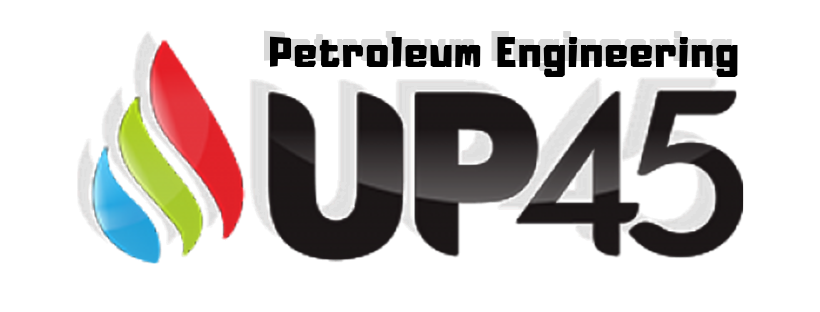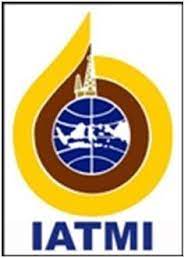Stimulasi Thermochemical dan Electrical Downhole Heating sebagai Solusi Alternatif Penanganan Wax Problem pada Sumur High Pour Point Oil: Studi Kasus Lapangan "X"
(1) UPN Veteran Yogyakarta
(2) UPN Veteran Yogyakarta
(*) Corresponding Author
Abstract
Minyak mentah yang memiliki titik tuang tinggi (HPPO) disebabkan oleh adanya komponen berat seperti asphaltenes. Pada beberapa kasus, komponen asphaltenes dapat menyebabkan permasalahan seperti pengendapan wax pada tubing produksi. Untuk mengatasi masalah ini, beberapa instrumen, bahan kimia, dan teknik telah diusulkan dan digunakan. Sampai saat ini belum ada metode yang ekonomis untuk mencegah pengendapan asphaltenes. Oleh karena itu, diperlukan pengembangan asphaltene treatment program yang baru. Penulisan paper ini bertujuan memberikan perbandingan strategi alternatif dalam mengatasi masalah pengendapan wax pada interval kedalaman tubing tertentu dengan penggunaan Stimulasi Thermochemical maupun Electrical Downhole Heating. Metode penelitian yang digunakan adalah studi kasus penerapan Stimulasi Thermochemical pada sumur X-1 dan Electric Downhole Heating pada sumur X-2 dengan mengevaluasi dan menganalisis laju produksi, temperatur kepala sumur, dan efektivitas biaya kedua metode tersebut. Stimulasi Thermochemical adalah metode injeksi bahan kimia pada sumur produksi untuk menghasilkan panas atau reaksi eksotermik, dengan perendaman selama 12 hingga 24 jam. Sedangkan metode Electrical Downhole Heating digunakan untuk memanaskan minyak mentah pada tubing secara berkala dengan prinsip kerja berupa adanya sistem kontrol yang akan mempertimbangkan panas minimum untuk melelehkan wax dan secara bersamaan menjamin bahwa temperaturnya tidak akan melebihi temperatur operasi maksimum dari isolasi kabel. Berdasarkan hasil studi kasus, Electric Downhole Heating (EDH) mengungguli Stimulasi Thermochemical dalam hal kinerja dan efektivitas biaya. EDH meningkatkan profit sebesar 27% sekaligus mengurangi payout time (POT) sebesar 25% dibandingkan dengan Stimulasi Thermochemical.
Kata Kunci: thermochemical, Electric Downhole Heating, HPPO, asphaltenes, wax treatment
Full Text:
PDFReferences
Alade, O. S., Hamdy, M., Mahmoud, M., Al Shehri, D. A., Mokheimer, E., Patil, S., & Al-Nakhli, A. (2020). A preliminary assessment of thermochemical fluid for heavy oil recovery. Journal of Petroleum Science and Engineering. https://doi.org/10.1016/j.petrol.2019.106702
Alian, S. S., Singh, K., Mohamed, A. S., Ismail, M. Z., & Anwar, M. L. (2013). Organic deposition: From detection and laboratory analysis to treatment and removal. Society of Petroleum Engineers - SPE Asia Pacific Oil and Gas Conference and Exhibition, APOGCE 2013: Maximising the Mature, Elevating the Young. https://doi.org/10.2118/165912-ms
Allenson, S. J., & Walsh, M. A. (1997). Novel way to treat asphaltene deposition problems found in oil production. Proceedings - SPE International Symposium on Oilfield Chemistry. https://doi.org/10.2523/37286-ms
Cheong, I. K., & Mohamed, A. S. (2014). Multi strategy approach to manage waxy oil wells in Malaysia’s marginal fields - A unique experience offshore peninsular Malaysia. Society of Petroleum Engineers - International Petroleum Technology Conference 2014, IPTC 2014 - Innovation and Collaboration: Keys to Affordable Energy. https://doi.org/10.2523/iptc-17729-ms
DSP (unpublished work). (2020). Decision Support Package X Field Optimization : X Field Development Proposal.
Ghloum, E. F., Al-Qahtani, M., & Al-Rashid, A. (2010). Effect of inhibitors on asphaltene precipitation for Marrat Kuwaiti reservoirs. Journal of Petroleum Science and Engineering. https://doi.org/10.1016/j.petrol.2009.10.003
He, L., Lin, F., Li, X., Sui, H., & Xu, Z. (2015). Interfacial sciences in unconventional petroleum production: from fundamentals to applications. Chemical Society Reviews. https://doi.org/10.1039/c5cs00102a
HUAFU (unpublished work). (2019). Oil Well Continuous Tube Cable Electric Wax Heating & Cleaning Design in Indonesia.
Huc, A. Y. (2011). Heavy Crude Oils: From Geology to Upgrading (Introduction and Synopsis. Editions Technip, April, 27–34.
Khalil, C. N., Neumann, L. F., Linard, C. A., & Santos, I. G. (1994). Thermochemical process to remove paraffin deposits in subsea production lines. Proceedings of the Annual Offshore Technology Conference. https://doi.org/10.4043/7575-ms
Mousavi Dehghani, S. A., Vafaie Sefti, M., Mirzayi, B., & Fasih, M. (2007). Experimental investigation on asphaltene deposition in porous media during miscible gas injection. Iranian Journal of Chemistry and Chemical Engineering.
Saidu, M. A. (2013). Thermo Chemical In-Situ Heat Generation Technique to Remove Organic Solid Deposition: Effective Tool for Production Enhancement and Flow Assurance. https://doi.org/10.4043/23933-ms
SST Group. (2016). Energy Efficient Operation of Oil Wells. https://sst.ru/en/solutions/industries/stream-tracer/
SST Group. (2020). Stream Tracer Тм Technology Successfully Replaces Series Resistance Downhole Heating. https://stream-tracer.com/case_1
Tuttle, R. N. (1983). High-Pour-Point And Asphaltic Crude Oils And Condensates. JPT, Journal of Petroleum Technology. https://doi.org/10.2118/10004-pa
DOI: https://doi.org/10.30588/jo.v4i2.836
Article Metrics
Abstract view : 337 timesPDF - 52 times
Refbacks
- There are currently no refbacks.
Copyright (c) 2021 Didin Muhidin, Hananda M Rose

This work is licensed under a Creative Commons Attribution 4.0 International License.




.jpg)










.png)